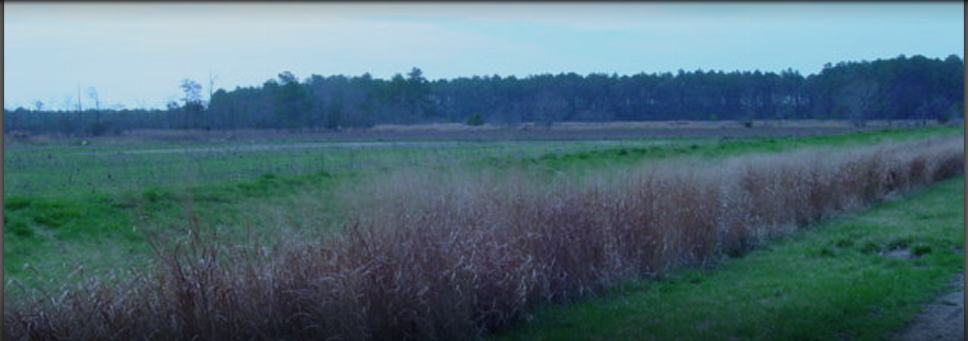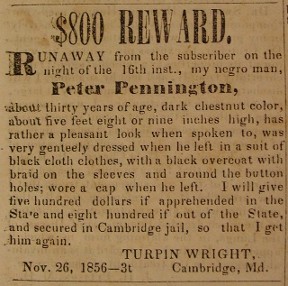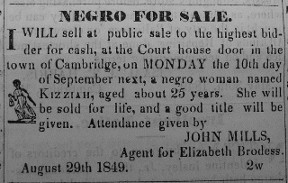Myths and Facts about Harriet
Tubman, and Selected Quotes and Misquotes
Myths and Facts:
Myth: Harriet Tubman rescued 300 people in 19 trips.
Fact: According to
Tubman’s own words, and extensive documentation on her rescue missions, we know
that she rescued about 70 people –
family and friends – during approximately 13 trips to Maryland. During public and private meetings during
1858 and 1859, Tubman repeatedly told people that she had rescued 50 to 60
people in 8 or 9 trips. This was before her very last mission, in December
1860, when she brought away 7 people. Sarah Bradford exaggerated the numbers in
her 1868 biography. Bradford never said that Tubman gave her those numbers, but
rather, Bradford estimated that was the number.
Other friends who were close to Tubman specifically contradicted those
numbers. We can name practically every person Tubman helped. In addition to the
family and friends, Tubman also gave instruction to another 70 or so freedom
seekers from the Eastern Shore who found their way to freedom on their own.
Myth: Harriet Tubman was born around 1820 in Bucktown,
Dorchester County, Maryland on the farm of Edward Brodess.
Fact: According to
the most recent research and oral traditions, Tubman was born in early 1822 on the plantation of Anthony Thompson, Brodess’s stepfather, located south of Madison in an area called Peter’s Neck in Dorchester County. Tubman was later brought to Bucktown, with
her mother and siblings, to live on Brodess’s small farm.
Myth: Harriet Tubman had a $40,000 "dead or alive" bounty on her head.
Fact:
The only reward for Tubman’s capture is in the
October 3, 1849 advertisement for the return of “Minty” and her brothers “Ben”
and “Harry,” in which their mistress, Eliza Brodess, offered $100 for each of them if caught outside
of Maryland. Slaveholders on the Eastern
Shore of Maryland had no idea it was Harriet Tubman (or, Minty Ross, as they
knew her) who was helping and inspiring people to run away. The $40,000 bounty figure was made up by Sallie
Holley, a former anti-slavery activist in New York, who wrote a letter to a
newspaper in 1867, arguing for support for Tubman in her pursuit of back pay
and pension from the Union Army. To put
this in perspective, the US government offered $50,000 for the capture of John
Wilkes Booth, who murdered President Lincoln in 1865. $40,000 is equivalent to
several million today, and for that, she would have been captured, and every
newspaper in the nation would have posted that advertisement.
Myth: Harriet Tubman rescued people from all over the south.
Fact:
Tubman returned only to Maryland to bring away loved
ones – family and friends she could not live without and whom she could
trust. It was too dangerous for her to
go places where she did not know people or the landscape.
Myth: Jacob Jackson operated an UGRR "safehouse" at his home in Madison, Maryland
Fact: Jacob Jackson, a free black farmer and veterinarian,
was Harriet Tubman’s confidante. Tubman had a coded letter written for her in
Philadelphia and sent to Jackson in December 1854, instructing him to tell her
brothers that she was coming to rescue them and that they needed to be ready to
“step aboard” the “Ol’Ship of Zion.”
There is no documentation that he actually sheltered runaways in his
home. Jackson would be referred to as an agent.
Myth: Harriet Tubman helped build Stewart's Canal
Fact: Harriet Tubman did not help build the canal, which was
built between 1810 and 1830 when she was still a child. She probably used it to transport timber and
agricultural products when she worked in the area as a young adult during the
late 1830s and early 1840s. We do not
know if her father Ben Ross helped build the canal, but he certainly would have
used it for transporting timber.
Myth: Harriet
Tubman used the quilt code to follow the Underground Railroad.
Fact: Harriet
Tubman never used the quilt code because the quilt code is a myth. Tubman used various methods and paths to
escape slavery and to go back and rescue others. She relied on trustworthy people, black and
white, who hid her, told her which way to go, and told her who else she could trust.
She used disguises; she walked, rode horses and wagons; sailed on boats; and
rode on real trains. She used certain
songs to indicate danger or safety. She used letters, written for her by
someone else, to trusted individuals like Jacob Jackson, and she used direct
communication with people. She bribed people. She followed rivers that snaked
northward. She used the stars and other natural phenomenon to lead her north.
She also trusted her instincts and faith in God to guide and comfort her during
difficult and unfamiliar territory and times.
Myth: Harriet Tubman carried a rifle on her UGRR rescue missions
Fact: Harriet Tubman carried a small pistol with her on her rescue missions, mostly for protection from
slave catchers, but also to encourage weak-hearted runaways from turning back
and risking the safety of the rest of the group. Tubman carried a sharp-shooters
rifle during the Civil War.
Myth: Harriet Tubman sang ‘Swing Low, Sweet Chariot,’ and ‘Wade
in the Water’ and ‘Follow the Drinking Gourd’ as signals on the UGRR.
Fact: Tubman sang two
songs while operating her rescue missions.
Both are listed in Sarah Bradford’s biography Scenes in the Life of
Harriet Tubman: ‘Go Down Moses,’
and, ‘Bound For the Promised Land.’
Tubman said she changed the tempo of the songs to indicate whether it was safe
to come out or not. Follow the Drinking
Gourd was first written and performed by the Weavers, a white folk group,
in 1947, nearly 100 years after Tubman’s days on the UGRR. Swing
Low, Sweet Chariot was written and composed after the Civil War by a
Cherokee Indian living in Oklahoma and therefore would have unknown to Tubman before
the Civil War.
Fake Quotes and Authentic Quotes:
Fake Quote: “Every great
dream begins with a dreamer. Always remember, you have within you the strength,
the patience, and the passion to reach for the stars to change the world.”
Original Quote: There is no original quote for this. This
quote was entirely made up in 2007.
There is no documentation, nor historical basis for this quote.
Fake Quote: “I freed a
thousand slaves. I could have freed a thousand more if only they knew they were
slaves.”
Original Quote: There is no original quote for this. This quote was
entirely made up, and became popularized starting sometime in the the 1990s. There is no
documentation, nor historical basis for this quote.
Fake Quote: “Children,
if you are tired, keep going; if you are hungry, keep going; if you want to
taste freedom, keep going”
Original Quote: There is no original quote for this. This quote was
entirely made up, and became popularized in the 1960s during the Civil Rights
Movement. There is no documentation, nor historical basis for this quote.
Documented Original Authentic Quotes:
“I was the conductor of the Underground
Railroad for eight years, and I can say what most conductors can't say — I
never ran my train off the track and I never lost a passenger.” Harriet Tubman at a suffrage convention, NY, 1896.
"I had reasoned this out in my mind; there was
one of two things I had a right
to, liberty, or death; if I could not have one, I would have the other; for no
man should take me alive; I should fight for my liberty as long as my strength
lasted, and when the time came for me to go, the Lord would let them take
me." Harriet Tubman to Sarah
Bradford in Harriet, The Moses of Her People 1886
“…there was no one to welcome me to the land of
freedom. I was a stranger in a strange land; and my home, after all, was down
in Maryland, because my father, my mother, my brothers, and sisters, and
friends were there. But I was free, and they should be free.” Harriet Tubman to Sarah Bradford in Scenes in the
Life of Harriet Tubman, 1868
“Slavery is the next thing to hell.” Harriet Tubman to Benjamin Drew, St. Catharines,
Ontario, Canada, 1855
“I grew up like a neglected weed, - ignorant of liberty, having no
experience of it. Then I was not happy or contented.” Harriet Tubman to Benjamin Drew, St.
Catharines, Ontario, Canada, 1855
“..and I prayed to God to make me strong and able to
fight, and that's what I've always prayed for ever since." Tubman to
Ednah Dow Cheney, SC, 1865
“God’s time [Emancipation]is always near. He set the
North Star in the heavens; He gave me the strength in my limbs; He
meant I should be free.” Harriet Tubman to Ednah Dow Cheney, New York City, circa 1859.




